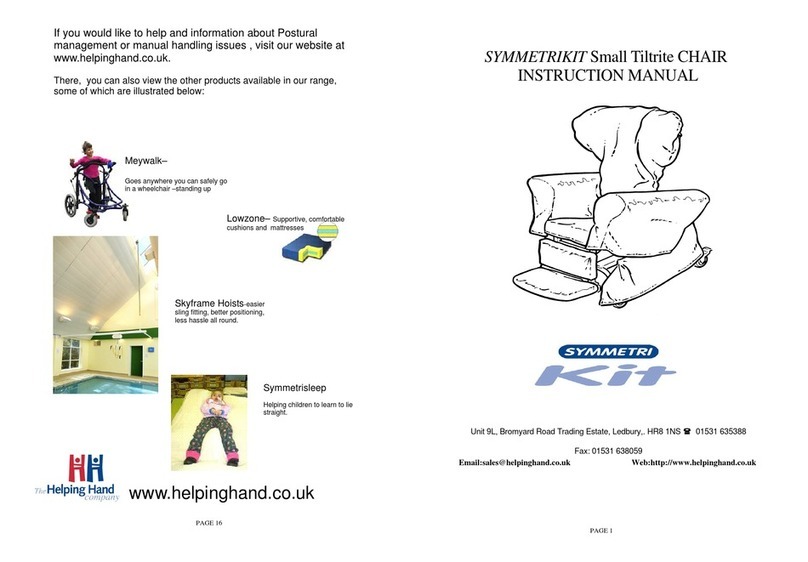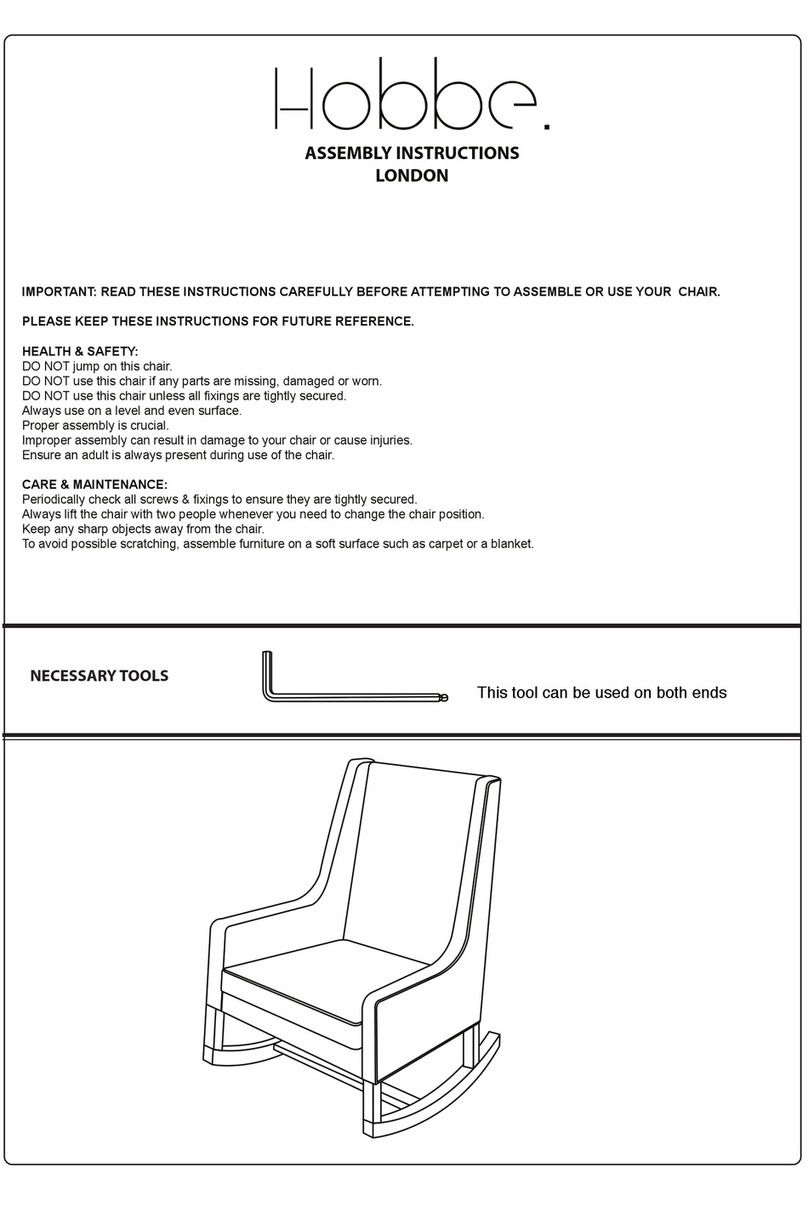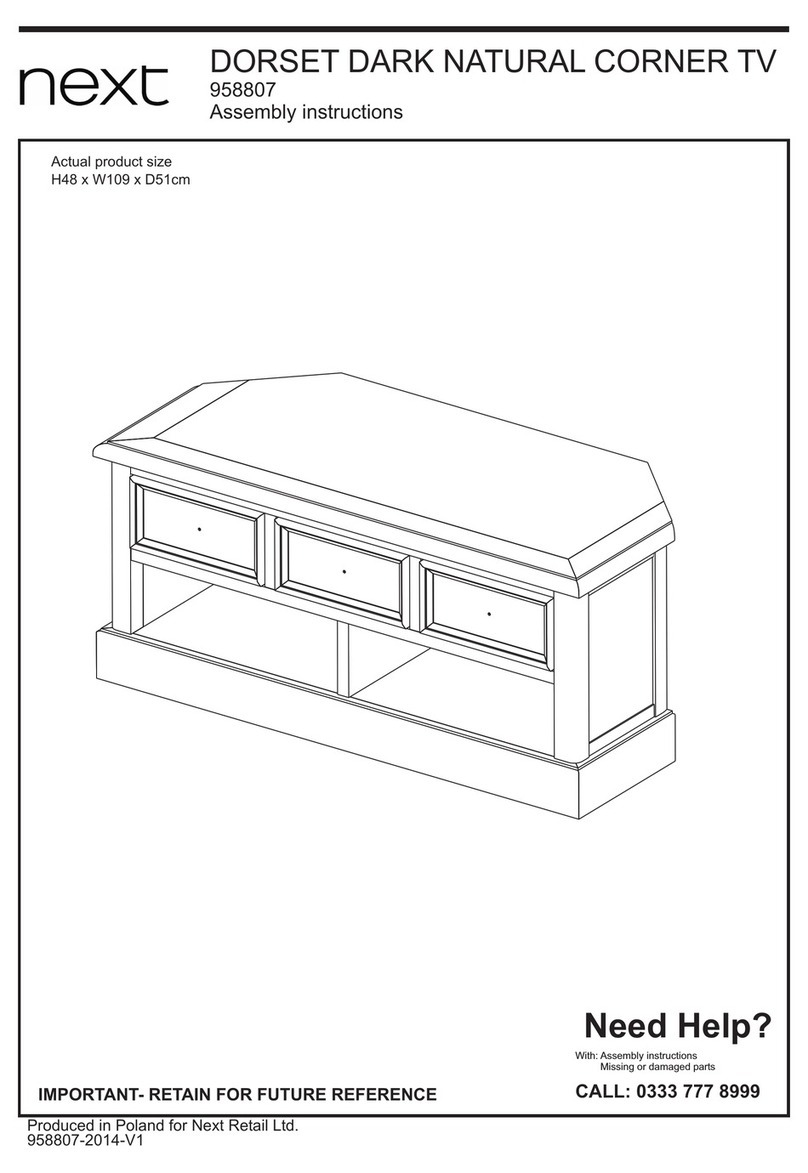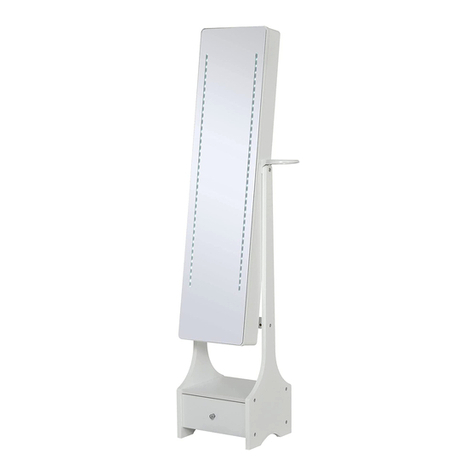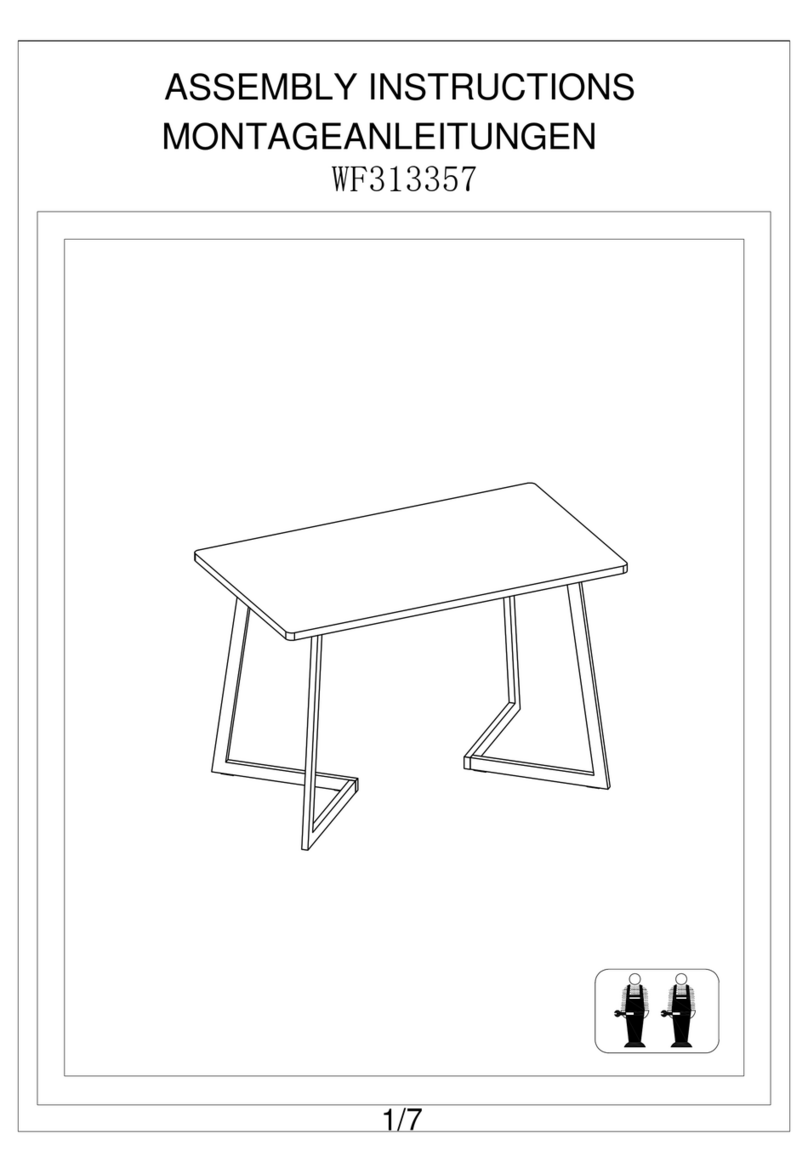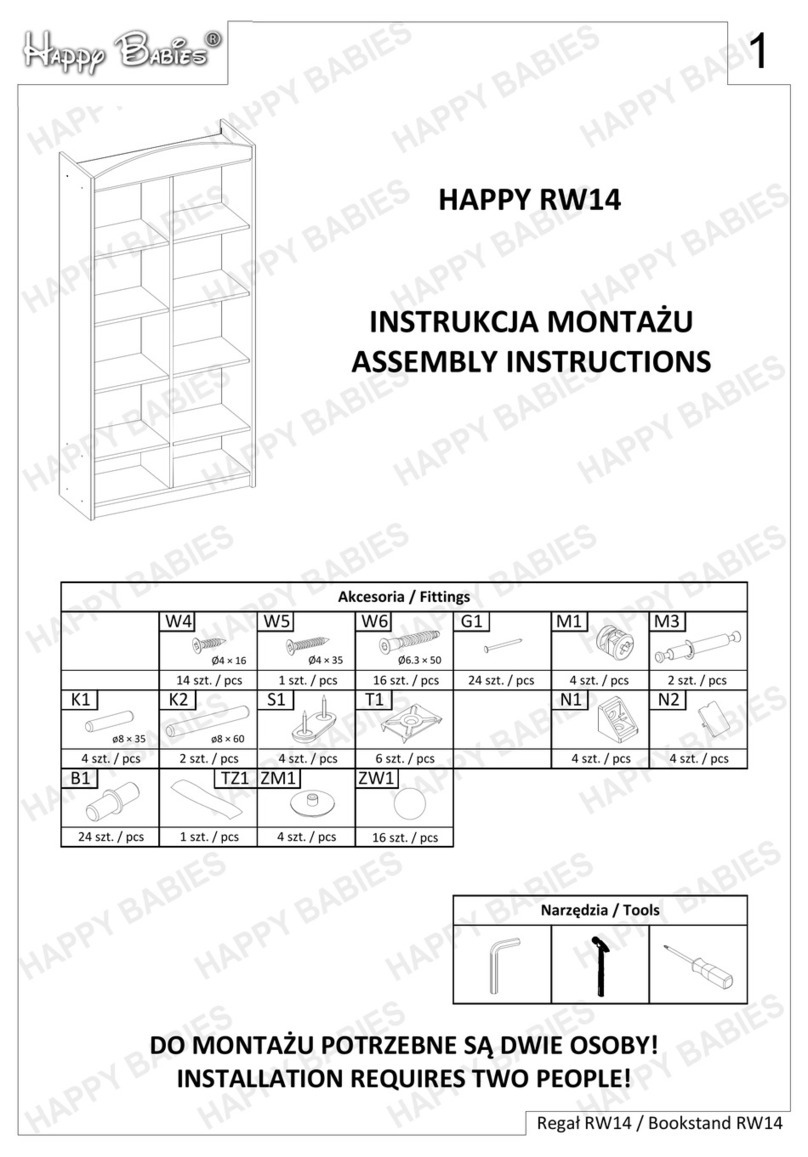Helping Hand Symmetrikit Medium User manual

PAGE 24
Bromyard Road, Ledbury HEREFORDSHIRE HR8 1NS, UK
Tel: 015 1 6 5 88 Fax 015 1 6 8059
Email: sales@helpinghand.co.uk www.helpinghand.co.uk
PAGE 1
Patents Pending
Symmetrikit
CHAIR
INSTRUCTION MANUAL
Medium and Large models
from January 2010
Symmetrikit is a division of The Helping Hand Company
Bromyard Road, Ledbury HEREFORDSHIRE HR8 1NS, UK
Tel: 015 1 6 5 88 Fax 015 1 6 8059
Email: sales@helpinghand.co.uk www.helpinghand.co.uk

PAGE 2
Introduction
Guarantee
Cautions
4
Safety Instructions
5
Adjustments -
Operational
6
Special Positions
12
Growth 14
Swing Out Arms 15
Care Instructions 16
Accessories
17
Notes 2
In order for the user to be well supported it is essential
that the seating system be adjusted properly to fit. The
following guide will explain how to simply adjust the chair
and give tips on correct settings.
PAGE 23
NOT S

PAGE 22
Refit the cover and pass the strap end fittings through.
Secure these around the hinges using the Velcro fastenings.
Route the straps over the back cushion and down the front.
The lower fittings should be secured around the lower bar of
the backrest using the Velcro provided.
With the client seated, locate the four
mounting straps. Place the bib in front of
the client’s chest and secure to the four
point lap straps using the cam buckles
provided.
Remove the back cover and locate the headrest
hinges. A hole must be made in the cover
adjacent to these hinges.
C4) 4 Point Chest Harness
Standard
PAGE 3
INTRODUCTION
Your Symmetrikit chair has been designed specifically for the use of those
who require maximum support in order to maintain their comfort and posture.
Great care has been taken to ensure that your chair is simple to use and easy
to maintain.
Should you have any questions about positioning, please contact your
therapist.
Your chair is the most versatile chair available and has many
adjustments including:
♦ Arms which can be independently adjusted in height. They can also be tilted,
swivelled in and out and moved in and out.
♦ Fold down arms for access.
♦ The seat width and seat length can be altered.
♦ Adjustable back height with Kyphotic adjustment.
♦ Adjustable recline.
♦ Adjustable headrest .
♦ Adjustable leg rest.
♦ Adjustable footrest height and angle.
♦ True Tilt in Space. (The chair can be tilted back or forward without altering
ankle/knee/hip/back angles).
♦ Your chair can be used flat for side lying, prone, and supine positions.
Combined with the tilt in space, ‘Head Down’ positions can be used for
postural drainage.
♦ Covers can be removed for machine washing or wiped clean in situ.
♦ Seat Cushion can be easily removed for cleaning.

PAGE 4
GUARANT
The above chair, including upholstery and covers, is guaranteed against
faulty materials and faulty workmanship for a period of TWELVE MONTHS
from the date of manufacture.
The guarantee is valid for fair wear and tear only. It is not valid in cases
of misuse, or uses other than those specified in the Manufacturer's
Instruction Manual. We do not guarantee fabrics against shrinkage so
please pay careful attention to washing instructions.
Should spare covers be ordered subsequent to the purchase of this chair,
we cannot guarantee an exact colour match as dye strengths vary. We
reserve the right to withdraw patterns or colours from the range, but will
always endeavour to find the closest match available.
Footplate covers are not covered in the warranty.
Certain movement patterns and behaviours may accelerate fabric wear.
This cannot be covered by guarantee.
Please note :-
Wide arm settings and Neoglide wheels may cause difficulty in moving
the chair through narrow doorways.
This chair is not intended for outdoor use.
Warning
Do not allow children or pets to play with the chair at any time.
Adequately supervise children in the area near the chair.
lectric models: Always use the isolator switch when the chair is
not in use. Detach from charger before moving. The chair will not
operate with the charger plugged in. Warn visitors with children
of the potential danger of entrapment.
Safe use of your Symmetrikit Chair
These chairs are not designed for use in vehicles.
Please ensure the chairs are transported WITHOUT seated clients.
When selecting and issuing a piece of equipment it is the
responsibility of the Therapist to carry out a risk analysis on its
use. This is particularly pertinent for non-ambulant users who may
require assisted transfers.
Model
Size
Serial No
Manufactured
PAGE 21
C3) Groin Harness
Padded as standard (SA2820/2825)
With the client seated on the harness bring the two
front straps up between the thighs. Bring the rear
straps over the thighs and secure to the front ones
using the cam buckles.
Adjust straps as required
Secure the main part of the harness to the chair
by passing the wide straps on either side under the
seat and joining them with the Velcro provided.
Replace the seat cushion as shown
First remove the seat cushion and fit the
rear mounting straps around the lower
backrest bar (outside the cover). Now place
the main part of the harness on the seat with
the long straps to the back.
Thread the long straps through the ‘D’ rings
and the rear mounting straps.

PAGE 20
C2) 4 Point Lap Strap
Standard or padded
The standard lap strap is used to secure the client within the chair with
minimal intrusion. Clients prone to involuntary movements may benefits
from the more restrictive 4 point lap strap in order to provide additional
security.
Remove the seat cushion and locate
the rear and side seat mountings.
Secure the strap with the Velcro
fixings, ensuring the ‘back’ labels are
on the rear straps.
The buckle can now be
released ready for use.
Once the client is
seated, connect the
buckle and adjust the
strap to suit.
Refit the seat cushion and pass the strap
ends around the sides.
Check that the strap is fitted correctly, by
ensuring the main strap runs horizontally
across the cushion.
PAGE 5
This chair is capable of passive joint movement, it should only be
used following therapeutic advice.
Seating requirements may change. The user should be regularly reassessed
to ensure that the chair is adjusted appropriately.
It is recommended that therapists and carers complete the following
checklist when assessing the appropriate use of Symmetrikit chairs.
1. Is the users posture acceptable in the chair?
2. Are there concerns about pressure and are they being addressed?
. Is the user considered to be safe in the chair or would harnessing be
needed to keep them safe? A posture belt is recommended at all times.
4. Does the user or others around them have any behaviours which would
render the chair unsafe?
5.
Is the chair appropriate for the proposed environment?
6. When using the chair to provide different postures always check the
user’s respiratory competence.
Safety restrictions
Great care is taken in the design of this product to ensure that it complies
with all the appropriate safety legislation.
Please ensure that all staff are familiar with the following restrictions.
Incorrect use of this product can cause accidents.
Do not allow anyone to kneel or stand on the leg rest, arms or back
rest of this chair. nsure that there is normal weight distribution in
the lying position.
The user must always be positioned within the wheel base of the
chair. A posture belt may be necessary to achieve this at all times.

PAGE 6
1) Seat depth.
To set the seat depth locate the handle at the rear of the seat.
The handle can be swung out to increase leverage. Wind the handle
clockwise to shorten the seat and anticlockwise to lengthen it.
When the seat depth is correct the back of the users calf should be around
the thickness of two fingers away from front of the leg rest cushion.
2) Leg rest settings
Before setting the height of the foot
rest it is necessary to open the zips
along both sides of the leg rest
cover. The position of the zips is
indicated here.
PAGE 19
C) Harnesses
PL AS FAMILARIS YOURS LF WITH TH S PRODUCTS B FOR US .
IT IS SS NTIAL THAT CORR CT HARN SS FIXINGS AR FULLY
UND RSTOOD.
C1) Lap Strap
Standard or padded
To fit the standard or padded lap strap first
remove the seat cushion and then
locate the rear seat mounting straps.
Take the strap end fittings and attach
around the seat mounting using the Velcro
fixings provided.
The main part of the strap can then be
fitted through the cam buckles at either
end and adjusted for length.
The side release buckle can then be
released ready for use.

PAGE 18
B) Pommels
There are two alternative
pommels available for the
chair. These vary in width
to allow for the
requirements of different
users.
The pommel is fitted by
sliding the lower tube into
the socket provided in the
seat frame. To remove it
simple depress the red
knob illustrated below.
Should it be necessary to change
the pommel head size or adjust
the height of the pommel first
locate screw 1. Once this is
loosened, the pommel head and
the upper bracket can then be
moved up, down or removed
altogether.
Once in the correct position simply
tighten the screw.
PAGE 7
Inside the zips you will find the
adjuster screws (arrowed) loosen
these with the 4mm Hex key
supplied. The footplate can now
slide to the required height.
When the height is correct all of the
underside of the user’s thigh should
be in contact with the seat cushion.
Their feet must be flat on the foot
plate and not hanging above it.
It may be necessary to adjust the angle of the footplate to get the user’s
foot fully supported. The lever to adjust the footplate is underneath the
plate and is show in red below.
To adjust the angle, hold the front
of the plate with your right hand
and reach underneath to the handle.
Pull the handle back whilst moving
the footplate to the required angle.
It is locked when the handle is
released.
Ensure the area between the
base tilt plate is clear of
obstruction before and during
operation

PAGE 8
3) Leg rest angle (Power)
The angle of elevation of the leg rest
can easily be altered.
On the power chair simply push the
button on the handset to raise or
lower the user’s legs.
Ensure the area around the leg rest
actuator shaft is clear of obstruction
before and during operation
Check that the footplate height is still correct after adjusting
the angle
4) Leg rest angle
(Manual)
To raise the manual leg
rest simply lift to the
required angle. To
lower it locate the
handle behind the
cushion on the left side
of the chair. Shown
here in red. Lift the leg
rest slightly whilst
pulling the lever and
then lower to the
required angle. It will
lock when the lever is
released.
PAGE 17
ACC SSORI S
A) Big Wheel Kit
For those who require the security of extra
stability while sitting in your chair, we
provide a big wheel kit option.
The breaking system differs to the smaller
castors.
To engage the brake, press your foot
down on the brake plate.
Sliding your foot under the brake plate
and lifting will release the brake.
Together with a battery charger, you will also receive a chair transformer.
This is the unit with the curly wire shown below.
The transformer allows you to use the chair if the battery is flat or if you
wish to use the chair while the battery is charging.
To use the transformer, marry up the three pins from the transformer to
the three pins in the chair and plug in. Then plug the transformer into
your electrical supply and use the handset as usual.
If you wish to charge the battery and use the chair powered from the
transformer please see the image on the far right side
Power the chair off the mains:-
Re-setting the battery fuse:-
If the chair does not operate after
charging . The battery fuse may need to
be reset.
Simply press the reset button on the side
of the chair below the right hand arm. It
may be necessary to raise the fabric
valance to see it.

PAGE 16
Care instructions:-
Regular maintenance will ensure that your chair gives many years of reliable service.
We recommend that the chair is inspected and serviced annually. In cases where the
chair is subject to excessive loads i.e. used by a person with repetitive or destructive
movement patterns that the chair is inspected monthly.
Ensure the area around the castors is clear before and during moving the chair.
Cleaning:-
Covers:-
All of the covers are removable for cleaning or can be wiped down in situ. If the outer
covers are removed for washing the chair can still be used as all the cushions are either
closed cell foam or have water proof covers.
All of the fabrics are Teflon treated for easy cleaning and are waterproof. They can be
washed at 40°C using a mild detergent. Do not iron, dry clean, bleach or tumble dry.
Frames:-
The frame of the chair can be cleaned by wiping down with a mild disinfectant solution.
If necessary it can be steam cleaned but it must be thoroughly dried before use.
Battery maintenance:-
The battery of your chair has been designed to give a good working time between
charges but it must be charged regularly. The handset has a charge level indicator to
show when a recharge is required. When the light is illuminated red it is time to
recharge. A full charge from a flat battery will take ten hours. The charger is shown in
the centre picture below.
When recharging use only the charger provided with your chair. It is plugged in to the
charge lead at the back of the chair. Marry up the three pins from the charger to the
three pins in the charge socket from the chair, click together, plug the charger into the
your electrical supply and turn on to charge. A light indicator will appear on the battery
charger when charging. This will dim as the chair is charging and will go out all together
when the battery is charged.
Please note:- In order to protect the charger the chair will not operate when the charger
is plugged into it.
PAGE 9
5) Back Rest height.
Before setting the height it is
necessary to open the top of the
back shell as illustrated.
To do this lift the top front edge
off the Velcro and hinge the shell
back. This will expose the back
rods of the chair.
After adjustment re-fit the cover.
The back height is adjusted by loosening the clamp screws
arrowed. Once loose, lift the extending back rods up by holding
on to the chair handles and lifting upwards. They can then be
raised or lowered as required. When at the correct height,
tighten the clamps.
On the side of the right hand upright tube there are calibration
markings. When adjusting the chair compare these settings
with those on the settings chart supplied with the chair. As the
user’s requirements change record the new settings for future
reference.

PAGE 10
Your Symmetrikit chair can be fitted with a variety of back designs to suit
from the most simple to most complex needs. The fitting and adjustment of
these backs is described below.
6) Finger form (for complex
needs)
Before adjusting remove the back
shell by hinging down as before.
Once hinged down pull the shell
off the lower pivot pins.
To adjust the height of the
armatures, loosen the screws at
the back of the armatures labelled
A & B. Slide into position and
retighten the screws.
To alter the position of the
Armatures loosen all four Adjuster
Buttons (arrowed). The armature
can then be moved in any
direction required to support the
user. Once in the correct
position tighten the buttons using
the spanner provided. Note the
number beside each button
against the settings chart. Also
take note of the position of the
armature on the cross slide scale. This should be read from the
outer most edge of each silver bracket.
If required armatures can be
simply added or removed.
Lift the backrest cushion to allow
access to the uprights (not shown
for clarity).
With the clamp screws tight the
armature bracket should be twisted
so that it no longer over laps the up
right. It can then be removed
forwards. Reverse this to add more.
X 2
X 2
PAGE 15
12) Swing out arms
Firstly ensure that the chair
occupants are clear of the folding
arm mechanism before operating.
To allow easy access the whole
arm can easily be swung out of
the way. To move the arm
unscrew the nut towards the back
of the chair with your hand.
After a few turns, the arm will start
to hinge outwards, tucking neatly
beside the chair frame.
Relocating the arm is done by
hinging it firmly back up and
retightening the nut. Ensure that
the nut is fully secure before use.

PAGE 14
11.1) Arm rest height
adjustment
To adjust the height of the arms,
loosen the adjuster screw move the
arm up or as required.
Retighten the screw when the arm is
at the correct height.
On the vertical post there is a calibra-
tion scale. This will not be visible on
the lowest setting of the arm.
11.2) Arm rest angle adjustment.
If required the back of the armrest can be raised to give additional trunk
support.
To adjust this angle, remove knob A and loosen knob B. By moving the
back of the armrest in towards the middle of the chair it is disengaged. It
can then be moved to the required angle and reengaged in the support.
To lock tighten both knobs .
NB You may find it easier to
fold the arm out first– see next
panel.
11) Arm rest width
adjustment (Seat Width)
To adjust the width between
the arms, loosen the adjuster
screws move the arm in or out
as required. There is a
calibration marking on the
horizontal post attached to the
arm for you to check against
your settings chart.
B
A
PAGE 11
After adjusting a
Fingerform back or
fitting a new type
of back refit the
back shell.
To do this slot the
recesses in bottom of
the shell onto the
Velcro by the pivot
pins either side of the
back. Once fitted to
the Velcro by the pins,
hinge it up and secure
to the top bar with the
Velcro.
7
) Symmetricare Backrest
The Symmetricare back module gives additional support over a
conventional chair back.
Within the cushion is a version of our Finger form technology. To
adjust the width or shape of the back simply bend it in to the
required position. It will then retain this shape as long as needed.
The unbent module is also shown here for reference.

PAGE 12
8) Back rest angle (Power)
The angle of elevation back rest can
easily be altered.
On the power chair simply push
the button on the handset to alter
the users recline angle.
9) Back angle (Manual)
Hold the backrest firmly with both hands.
Pull the left hand lever back and move to
the required angle. Release the lever
before letting go of the backrest.
On power or manual chairs the recline
angle can be read for the scale on the
lower section of the back shell on the left
hand side.
9.1) Kyphotic back angle
This hinges the back from the middle of the
back to help support those who stoop forward.
To adjust this hinge hold the nut tight with a
10mm spanner and then loosen the screw with
a Hex key and angle as required.
Please note: Consult your therapist before
adjusting.
PAGE 13
10) Tilt in space
Both power and manual chairs
have a Tilt in Space function.
This allows the whole chair to
be tilted forwards or back wards
independently of any recline or
leg rest settings.
To operate the tilt on the manual
chairs, hold the backrest with both
hands and pull the right hand lever.
Move the chair to the desired angle
and release the handle.
On power chairs simply power the
chair into the required angle by
using the handset.
10.1) Tilt in space
When tilting the chair keep fingers and
hands away
from the pivot
mechanism
10.2) Tilt in space
Ensure the area under the under seat
actuator plastic cover and the base tray is
clear of obstructions before tilting the chair.
Ensure the area under the base tray is free
from obstructions before operating the tilt
mechanism
This manual suits for next models
1
Table of contents
Other Helping Hand Indoor Furnishing manuals
Popular Indoor Furnishing manuals by other brands
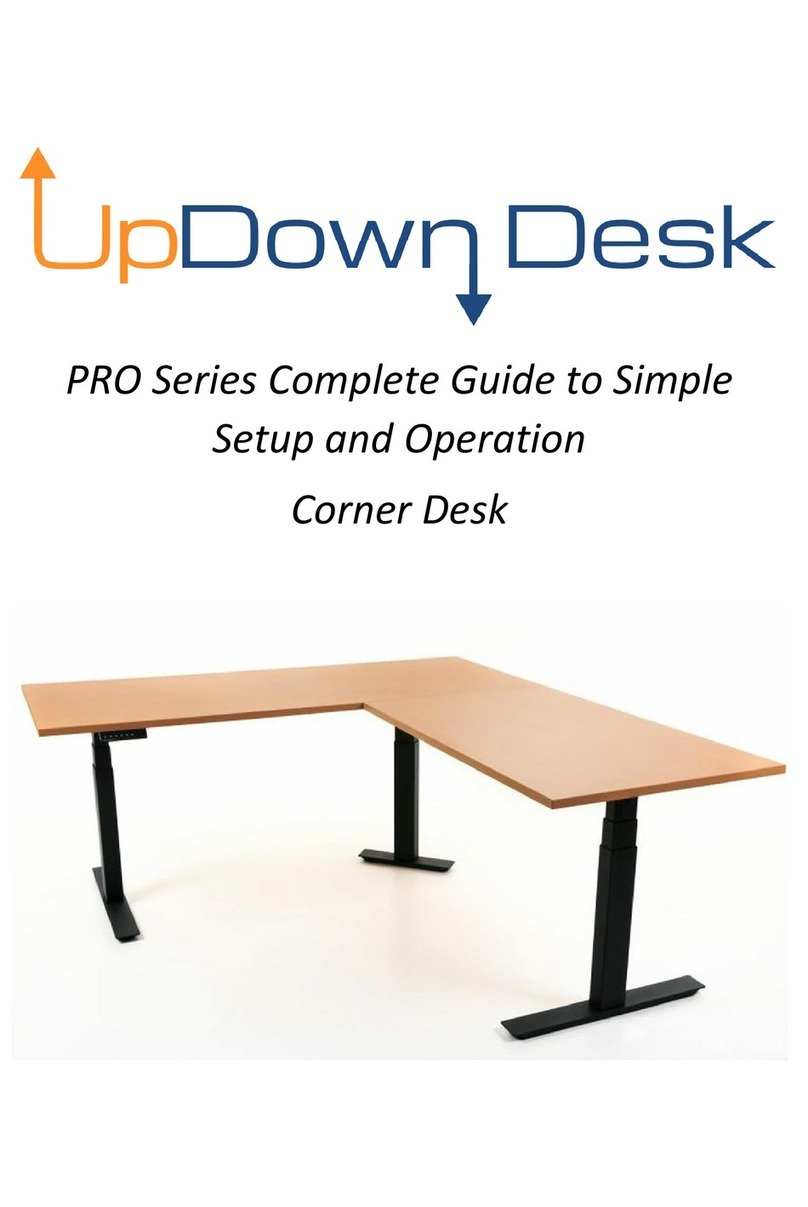
UpDown Desk
UpDown Desk PRO Series Set up and operation guide
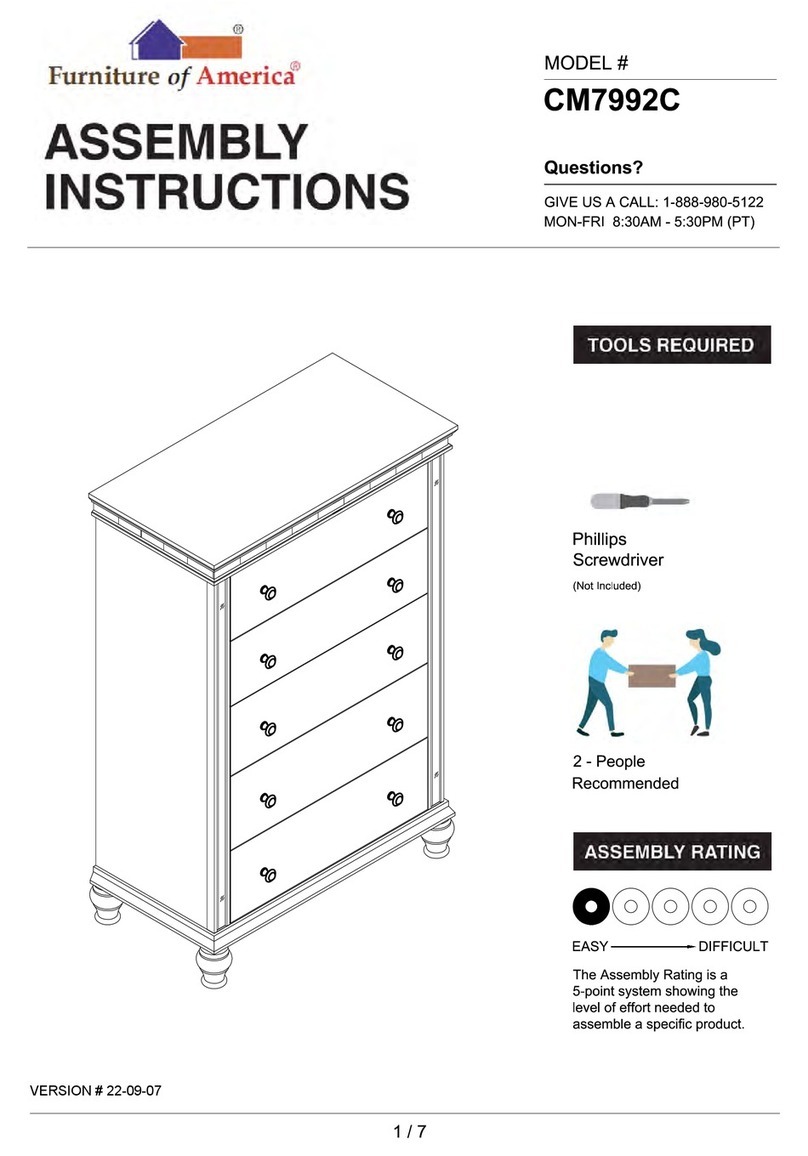
Furniture of America
Furniture of America CM7992C Assembly instructions
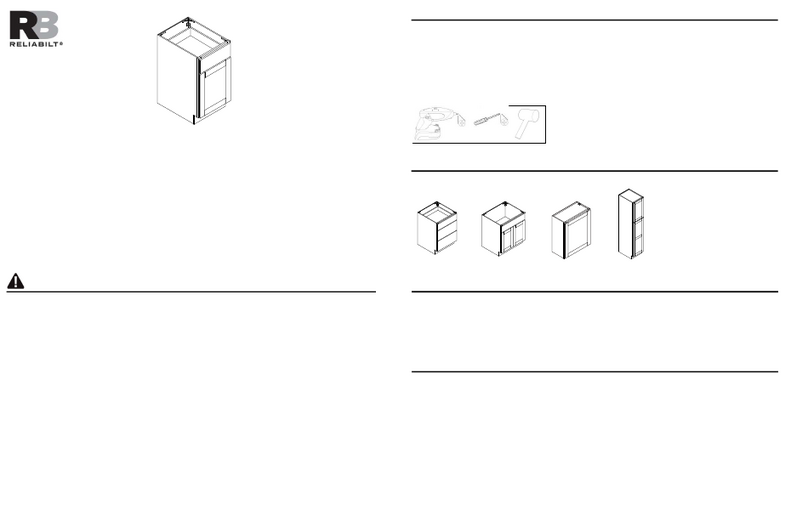
Reliabilt
Reliabilt LS-SW-BWB18 Assembly instructions

Franke
Franke M600HD Mounting instruction and Manual
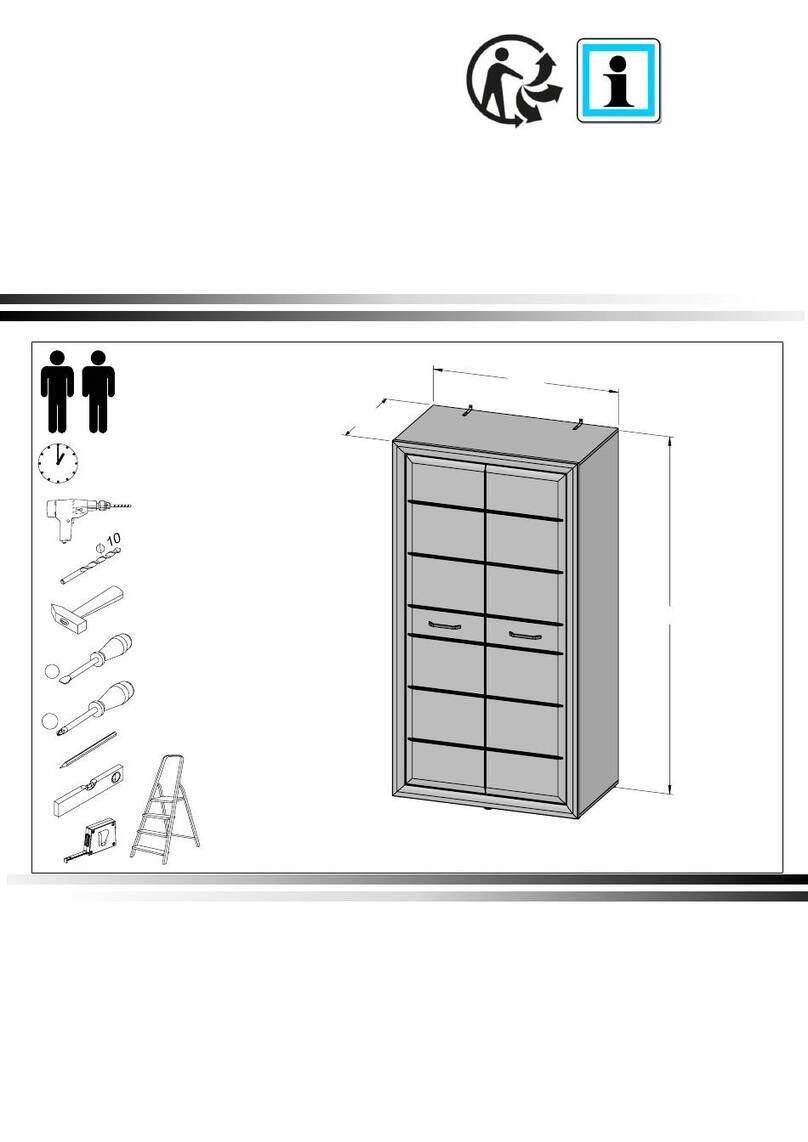
Forte
Forte MRYS821 Assembling Instruction
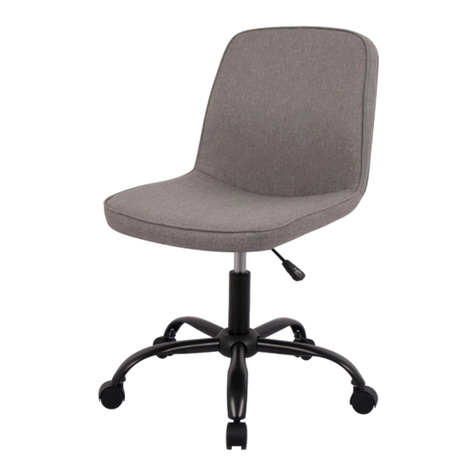
7th Haven
7th Haven 7H0C0015 Assembly instruction
